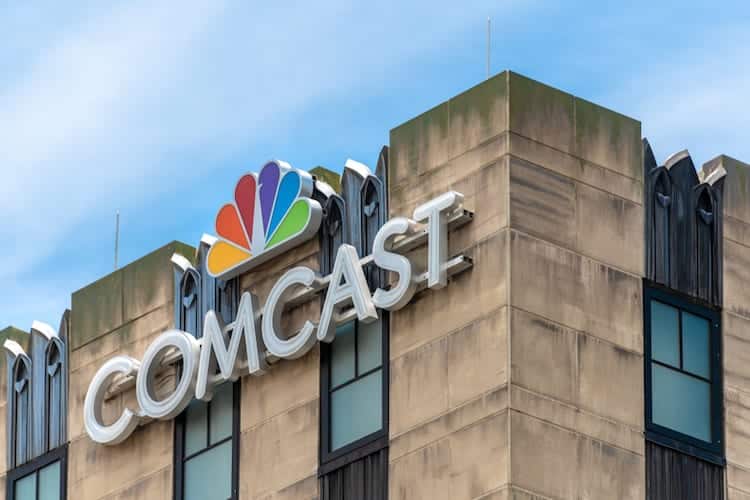 On November 13, 2019, the Supreme Court heard arguments in Comcast Corp. v. National Association of African American-Owned Media.1 The Court’s decision will determine how difficult it will be to bring future cases regarding possible discrimination and racial bias to trial.2
On November 13, 2019, the Supreme Court heard arguments in Comcast Corp. v. National Association of African American-Owned Media.1 The Court’s decision will determine how difficult it will be to bring future cases regarding possible discrimination and racial bias to trial.2
Facts of the Case
Byron Allen, an African American, owns Entertainment Studios Networks (ESN), which operates channels including JusticeCentral.TV and Pets.TV.3 Cable provider Comcast declined to carry ESN channels, citing capacity constraints and lack of demand.4 Allen alleges discrimination, claiming that Comcast offered untruthful excuses and added white-owned networks instead of his.5 Comcast calls the case frivolous, pointing out that a Carter-appointed district judge dismissed the case three times.6 The Supreme Court will decide if Allen’s case merits discovery and trial.7
Legal Arguments and Ramifications
Allen cites one of the first U.S. civil rights laws,8 the Reconstruction-era Civil Rights Act of 1866,9 which was intended to help former slaves overcome discriminatory “Black Codes” by guaranteeing them equal rights to make and enforce contracts.10 Allen calls it “an economic pathway for former slaves”11 that should ensure “equal access for economic opportunity for all Americans.”12
But does the law require Allen to prove that race was one motivating factor or the only factor in Comcast’s decision-making?13 Allen claims that the higher threshold would encode discrimination.14 The U.S. Chamber of Commerce asserts that the lower threshold would force businesses to settle costly nuisance suits15 rather than risk negative publicity and an onerous discovery process.16
Civil rights lawyers call17 the stricter test a “near-impossible”18 standard that would block victims’ suits19 and deter lawyers from taking their cases20 by precluding tactics like depositions.21 Drexel University law professor David S. Cohen summarizes, “Today very few people are openly racist, so they hide behind other reasons. A law that requires someone to say that race is the only reason for discrimination will be very hard to prove.”22
Comcast states that it isn’t advocating a major legal change,23 just a narrow ruling24 that won’t have far-reaching effects.25 Comcast touts its progressive diversity record26 in programming and in developing African-American ownership27 (which Allen disputes28). Comcast calls the discrimination allegations a “preposterous”29 business tactic.30
Political Involvement
The Department of Justice took Comcast’s side (despite President Trump’s derision of Comcast-owned channels),31 advocating the higher standard32 with 10 minutes of Comcast’s argument time.33 Some congressional Democrats have called for Comcast to be broken up,34 while others have joined some 2020 Democratic presidential candidates35 and over 20 civil rights organizations36 (including the NAACP37) in siding with Allen’s legal interpretation.
Some analysts see the conservative-leaning Supreme Court as unfriendly to civil rights plaintiffs38 and guarding of higher pleading standards.39 Though the justices appeared to favor Comcast during the hearing, Allen still expressed hope.40 The Supreme Court decision is expected in June 2020.
Suggested Further Reading
READ: Explanation of the “But-for” legal test that will decide this case (from Cornell Law School’s Legal Information Institute)
READ: Text of the Civil Rights Act of 1866 with historical context and study questions (from TeachingAmericanHistory.org, a project of the Ashbrook Center at Ashland University)
READ: Analysis of the hearing from SCOTUSblog’s Amy Howe
VIEW: What’s on the Supreme Court calendar?
Discussion Questions:
- Is it important to have diverse actors and characters on screen? Why or why not?
- Is it important to have diversity among writers, directors, and producers of shows and movies? Why or why not?
- Is it important to have diversity among owners of media companies? Why or why not?
- Is the Civil Rights Act of 1866 still relevant over 150 years later? Why or why not?
- In a discrimination trial, should Allen win if he can prove that Comcast was partially motivated by racial bias, or should he have to prove that bias is the only reason Comcast didn’t do business with him?
- Respond to this quote from Allen’s lawyer (in a Washington Post article): “Imagine somebody goes to a hotel to rent a room and the clerk says, ‘We’re not renting a room to you because we don’t have rooms available and we don’t rent rooms to black people,’” said Erwin Chemerinsky, dean of University of California’s Berkeley School of Law, who will argue on Allen’s behalf. “Under Comcast’s theory, that wouldn’t be enough to prove discrimination.”
- The Ninth Circuit Court of Appeals thinks that if Comcast is partially motivated by racial bias, it doesn’t matter if the company also has legitimate business reasons not to carry Allen’s channels. The Ninth Circuit says that Allen should get a chance to gather more evidence by looking at Comcast documents and interviewing their employees, and then there should be a trial. Do you agree or disagree with the Ninth Circuit? Why?
Featured Image Credit: Steve Helber, Associated Press, via https://images.wsj.net/im-123817?width=1260&size=1.5
[1] Oyez Project: https://www.oyez.org/cases/2019/18-1171
[2] CNN: https://www.cnn.com/2019/06/10/politics/supreme-court-race-discrimination-comcast/index.html
[3] Reuters: https://www.reuters.com/article/us-usa-court-comcast/supreme-court-to-hear-comcast-appeal-in-byron-allen-racial-bias-suit-idUSKCN1TB1QR
[4] Ibid.
[5] Ibid.
[6] Fox Business: https://www.foxbusiness.com/money/byron-allen-case-supreme-court-civil-rights
[7] The Hollywood Reporter: https://www.hollywoodreporter.com/thr-esq/byron-allen-v-comcast-supreme-court-race-case-could-reshape-bias-lawsuits-1245950
[8] U.S. House of Representatives History, Art, and Archives: https://history.house.gov/Historical-Highlights/1851-1900/The-Civil-Rights-Bill-of-1866/
[9] Federal Judicial Center: https://www.fjc.gov/history/timeline/civil-rights-act-1866
[10] The Hollywood Reporter: https://www.hollywoodreporter.com/thr-esq/byron-allen-v-comcast-supreme-court-race-case-could-reshape-bias-lawsuits-1245950
[11] American Bar Association ABA Journal: http://www.abajournal.com/web/article/scotus-considers-whether-comcast-discriminated-against-entertainment-mogul-in-denying-cable-tv-slots
[12] Yahoo: https://finance.yahoo.com/news/byron-allen-comcast-supreme-court-case-135904187.html
[13] Associated Press: https://apnews.com/c2f708547aa04b65b68ecf571a0236b1
[14] NewsOne: https://newsone.com/3891953/everything-to-know-about-bryon-allens-20-billion-racial-discrimination-lawsuit-against-comcast/
[15] Philadelphia Inquirer: https://www.inquirer.com/business/trump-comcast-civil-rights-byron-allen-race-hollywood-cable-20190907.html
[16] The Hollywood Reporter: https://www.hollywoodreporter.com/thr-esq/byron-allen-v-comcast-supreme-court-race-case-could-reshape-bias-lawsuits-1245950
[17] Washington Post: https://www.washingtonpost.com/business/2019/11/13/race-discrimination-standards-hang-balance-supreme-court-takes-up-comcast-suit/
[18] Deadline: https://deadline.com/2019/09/comcast-naacp-supreme-court-discrimination-battle-byron-allen-urban-league-1202747067/
[19] Philadelphia Inquirer: https://www.inquirer.com/business/comcast/comcast-byron-allen-lawsuit-naacp-civil-rights-laws-20191002.html
[20] The Hollywood Reporter: https://www.hollywoodreporter.com/thr-esq/byron-allen-v-comcast-supreme-court-race-case-could-reshape-bias-lawsuits-1245950
[21] Philadelphia Inquirer: https://www.inquirer.com/business/trump-comcast-civil-rights-byron-allen-race-hollywood-cable-20190907.html
[22] Ibid.
[23] Ibid.
[24] Deadline: https://deadline.com/2019/09/comcast-naacp-supreme-court-discrimination-battle-byron-allen-urban-league-1202747067/
[25] The Hill: https://thehill.com/regulation/court-battles/447704-supreme-court-to-hear-racial-discrimination-case-against-comcast
[26] Ibid.
[27] Deadline: https://deadline.com/2019/11/comcast-breakup-threat-congressman-letter-byron-allen-lawsuit-1202781178/
[28] The Hill: https://thehill.com/regulation/court-battles/447704-supreme-court-to-hear-racial-discrimination-case-against-comcast
[29] Associated Press: https://apnews.com/c2f708547aa04b65b68ecf571a0236b1
[30] Yahoo: https://finance.yahoo.com/news/byron-allen-comcast-supreme-court-case-135904187.html
[31] Philadelphia Inquirer: https://www.inquirer.com/business/trump-comcast-civil-rights-byron-allen-race-hollywood-cable-20190907.html
[32] Deadline: https://deadline.com/2019/08/byron-allen-comcast-civil-rights-lawsuit-supreme-court-filing-reaction-doj-donald-trump-1202671369/
[33] Deadline: https://deadline.com/2019/11/comcast-breakup-threat-congressman-letter-byron-allen-lawsuit-1202781178/
[34] Bloomberg: https://www.bloomberg.com/news/articles/2019-11-11/comcast-faces-call-for-breakup-in-legal-fight-with-byron-allen
[35] Deadline: https://deadline.com/2019/10/kamala-harris-cory-booker-civil-rights-donald-trump-comcast-lawsuit-byron-allen-supreme-cout-1202751831/
[36] Philadelphia Inquirer: https://www.inquirer.com/business/comcast/comcast-byron-allen-lawsuit-naacp-civil-rights-laws-20191002.html
[37] NAACP: https://www.naacp.org/latest/naacp-statement-comcast-corporations-partnership-trump-administration-eviscerate-civil-rights-protections/
[38] Philadelphia Inquirer: https://www.inquirer.com/business/trump-comcast-civil-rights-byron-allen-race-hollywood-cable-20190907.html
[39] The Hollywood Reporter: https://www.hollywoodreporter.com/thr-esq/byron-allen-v-comcast-supreme-court-race-case-could-reshape-bias-lawsuits-1245950
[40] CNBC: https://www.cnbc.com/2019/11/13/comcast-poised-to-beat-20-billion-discrimination-case-at-supreme-court.html
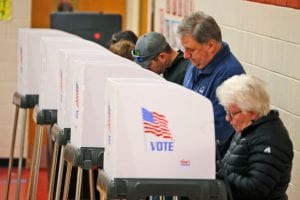 On Tuesday, November 5, 2019, voters in eight states went to the polls to vote in local and statewide elections. Competitive gubernatorial and state legislative races were held in Kentucky, Mississippi, and Virginia.1 These were the last elections before the 2020 census, which could result in the redrawing of political boundaries in each state. Furthermore, the results of these elections could be potential indicators of voter behavior and turnout in the 2020 election.
On Tuesday, November 5, 2019, voters in eight states went to the polls to vote in local and statewide elections. Competitive gubernatorial and state legislative races were held in Kentucky, Mississippi, and Virginia.1 These were the last elections before the 2020 census, which could result in the redrawing of political boundaries in each state. Furthermore, the results of these elections could be potential indicators of voter behavior and turnout in the 2020 election.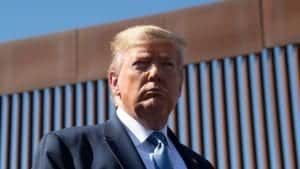 Immigration policy and enforcement continues to be a major area of conflict between Democrats and Republicans. Currently, Congress is considering many bills related to immigration, asylum, migrant detention, and family separation. This week, we will look at two proposals that Republicans are advancing;
Immigration policy and enforcement continues to be a major area of conflict between Democrats and Republicans. Currently, Congress is considering many bills related to immigration, asylum, migrant detention, and family separation. This week, we will look at two proposals that Republicans are advancing; 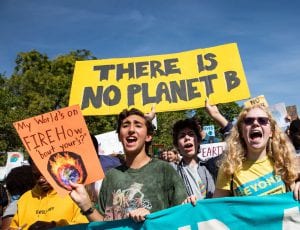 What are the students’ demands?
What are the students’ demands?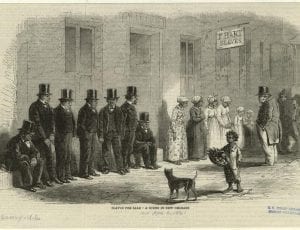 In January 2019, Representative Sheila Jackson Lee (D-Texas) introduced H.R. 40: The Commission to Study and Develop Reparations Proposals for African Americans Act.1 Reparations for slavery, Jim Crow, and systematic segregation and racism in major U.S. institutions is not a new idea, but it has never gained the type of traction that it currently has. In June, the House Judiciary Committee held hearings to begin exploring the idea.2
In January 2019, Representative Sheila Jackson Lee (D-Texas) introduced H.R. 40: The Commission to Study and Develop Reparations Proposals for African Americans Act.1 Reparations for slavery, Jim Crow, and systematic segregation and racism in major U.S. institutions is not a new idea, but it has never gained the type of traction that it currently has. In June, the House Judiciary Committee held hearings to begin exploring the idea.2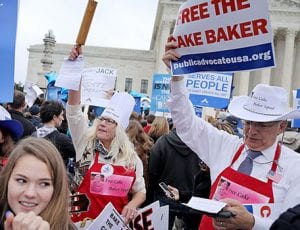 On August 15, the Department of Labor published proposed changes that would expand federal contractors’ ability to claim a religious exemption to equal opportunity and anti-discrimination rules.1 The proposed rule change, as written, could allow employers with federal contracts to fire or refuse to hire LGBTQ employees, and could even be used to fire unmarried pregnant women if an employer claimed that it was against their religion to support having sex out of wedlock.
On August 15, the Department of Labor published proposed changes that would expand federal contractors’ ability to claim a religious exemption to equal opportunity and anti-discrimination rules.1 The proposed rule change, as written, could allow employers with federal contracts to fire or refuse to hire LGBTQ employees, and could even be used to fire unmarried pregnant women if an employer claimed that it was against their religion to support having sex out of wedlock.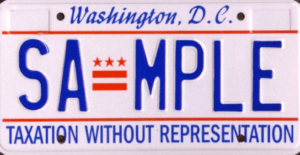 If you visit Washington, DC, one of the things you may notice is the license plates on local vehicles.
If you visit Washington, DC, one of the things you may notice is the license plates on local vehicles.






